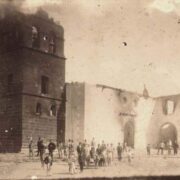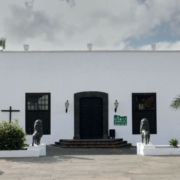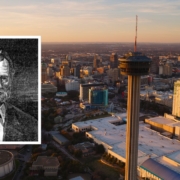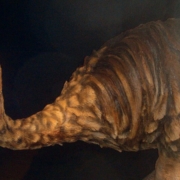Teguise’s main church has survived six centuries of misfortune, but it remains and it abides, the centrepiece of Lanzarote’s historical capital.
The Church of Our Lady of Guadalupe in Teguise in the central square of Teguise is one of the prettiest churches on Lanzarote, visited and passed by hundreds of thousands of tourists who attend the Sunday market each year. But its simple, tranquil beauty hides a turbulent past.
First established in the 15th century, the Church of Guadalupe is the mother church of Lanzarote and the principal place of worship in Teguise, the town that was capital of the island until 1847. Over the centuries it has been attacked, pillaged, and burnt by pirates and raiders on a number of occasions. But the end of piracy did not mean an end to disaster.
On the 6th of February 1909, an altar boy lit a candle to melt the wax on some metal candlesticks he was cleaning. Just before midday, he left the candle near a cupboard and climbed the tower to ring the bells. When he returned, the sacristy of the church was on fire and all efforts to extinguish the blaze failed. The fire spread quickly, reaching the tower, and stopping the clock at 12.25.
Fortunately, some brave locals plunged into the smoke-filled building and rescued the image of the Virgin of Guadalupe for whom the church is named, as well as three other images of saints.
The church was rebuilt with donations from residents, and in 1914 a dome was added to the tower, making it the tallest building on the island at that point.
The main photo shows Teguise men and boys, all wearing their caps and sombreros, in front of the burnt-out church, which appears to be still smouldering. Several of the men seem to be aware they are being photographed – a rare event in those days – and are posing for the camera. A Guardia Civil officer, in his distinctive cape and tricorn hat, can be seen on the left.










